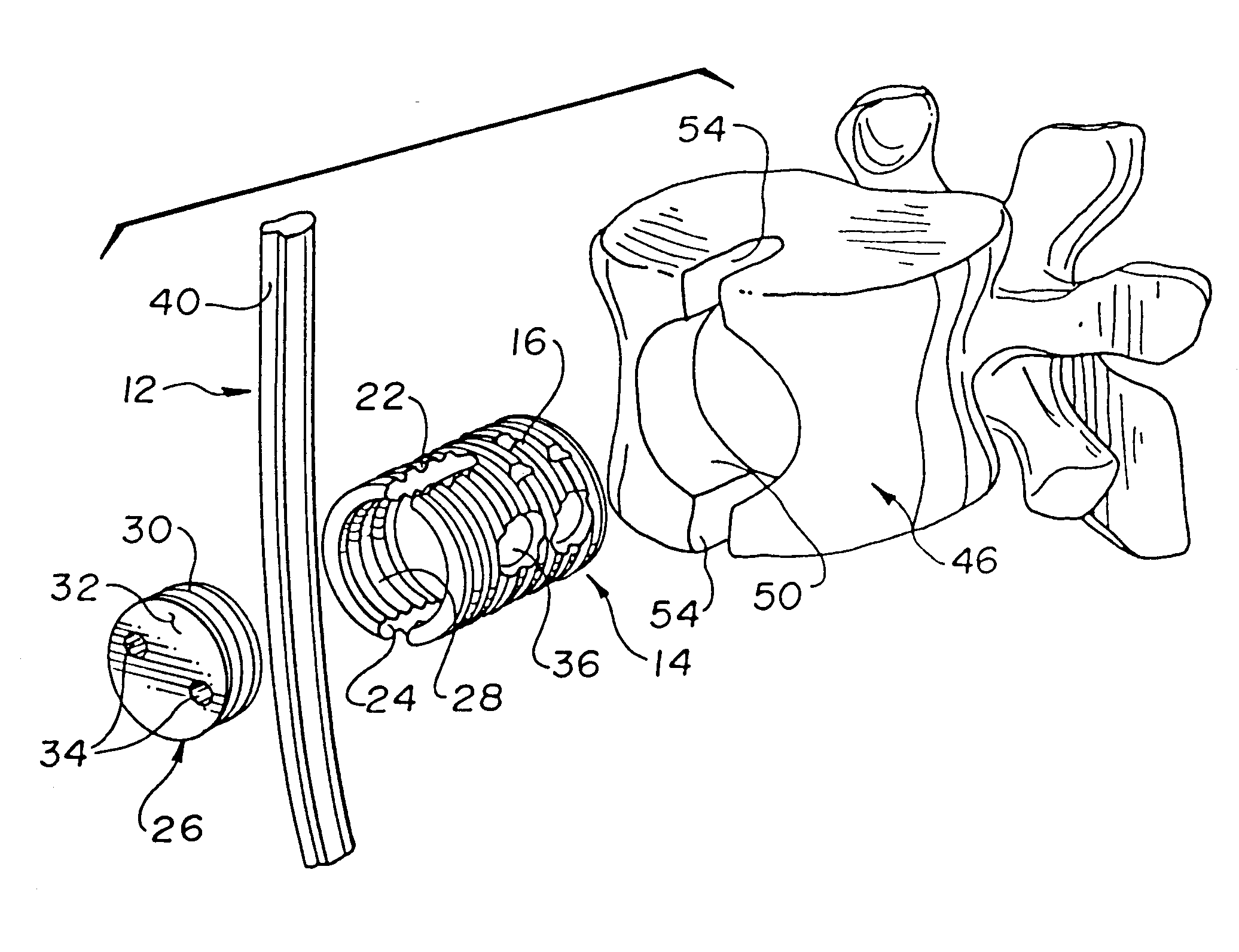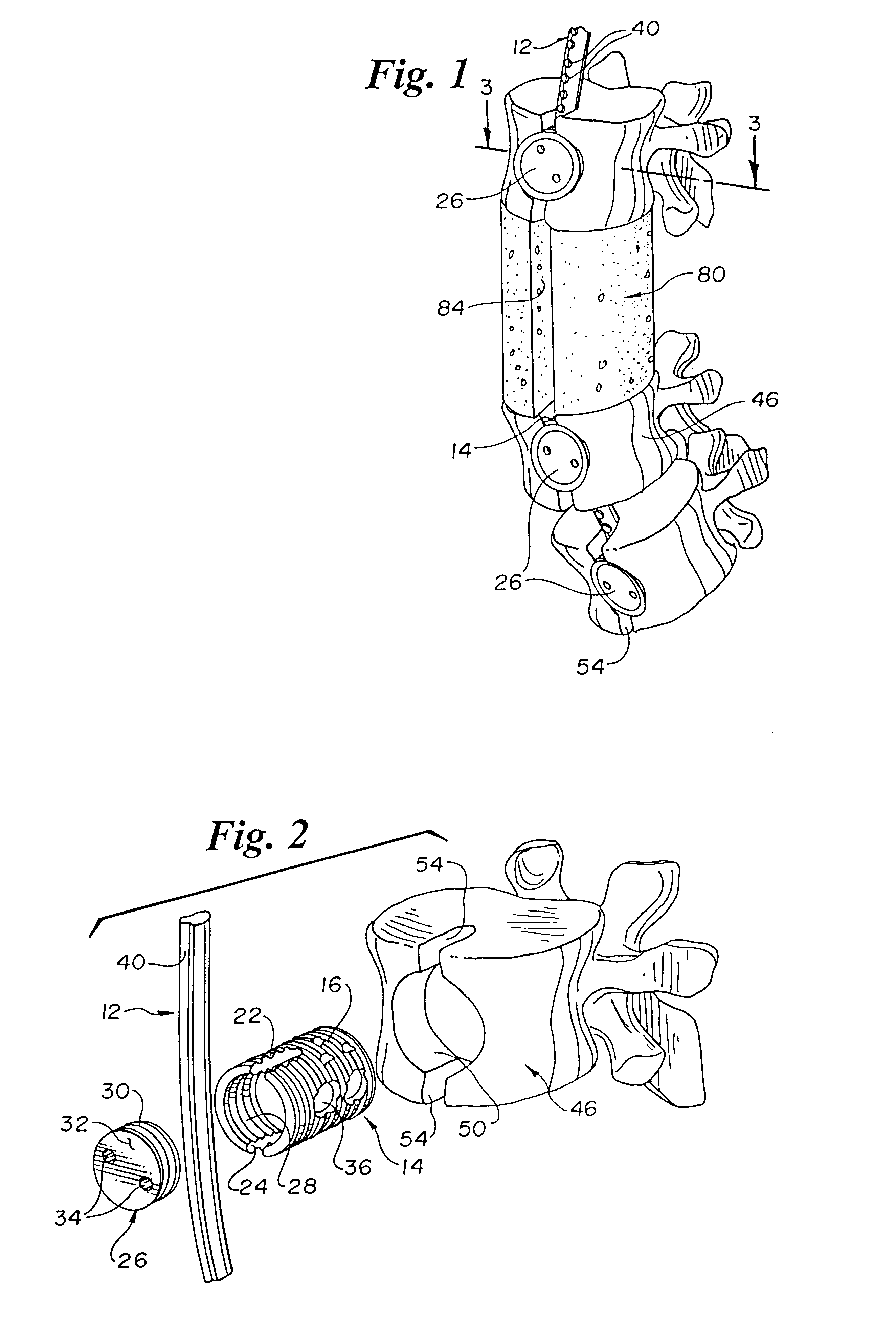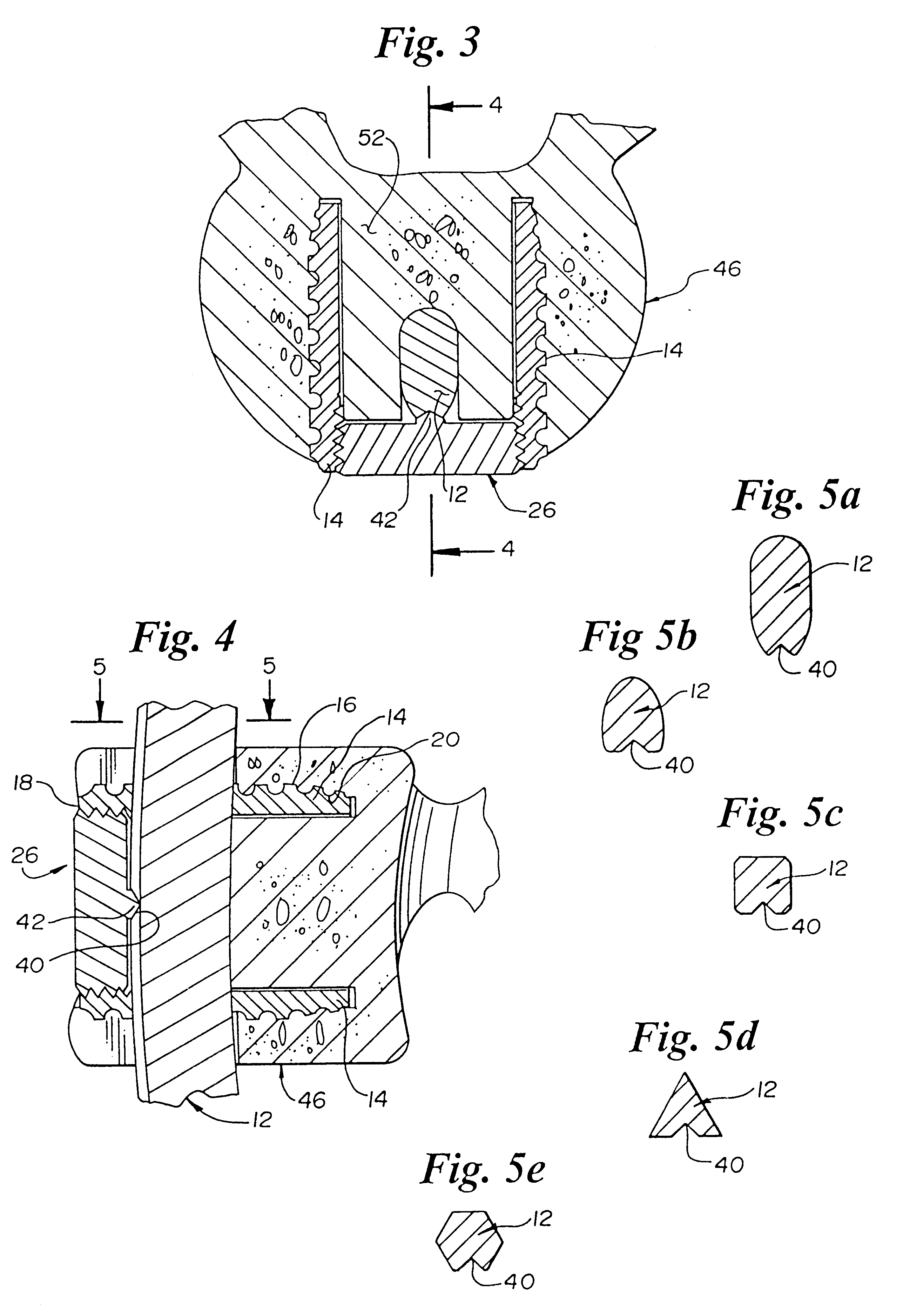Spinal fixation device
a technology of fixation device and spine, which is applied in the field of spinal fixation device, can solve the problems of screw that may slowly become less secure, and achieve the effects of reducing the risk of fracture, facilitating healing, and facilitating healing
- Summary
- Abstract
- Description
- Claims
- Application Information
AI Technical Summary
Benefits of technology
Problems solved by technology
Method used
Image
Examples
Embodiment Construction
is hereafter described with specific reference being made to the drawings in which:
FIG. 1 is a perspective view of the device of the invention securing vertebrae together;
FIG. 2 is an exploded view of the rod, screw, cap and prepared vertebrae;
FIG. 3 is a cross-sectional view taken through line 3--3 of FIG. 1;
FIG. 4 is a cross-sectional view taken through line 4--4 of FIG. 3;
FIG. 5a is a cross-sectional view taken through line 5--5 of FIG. 4 showing the rod in cross-section;
FIG. 5b is a cross-sectional view taken through line 5--5 of FIG. 4 showing an alternate rod in cross-section;
FIG. 5c is a cross-sectional view taken through line 5--5 of FIG. 4 showing an alternate rod in cross-section;
FIG. 5d is a cross-sectional view taken through line 5--5 of FIG. 4 showing an alternate rod in cross-section;
FIG. 5e is a cross-sectional view taken through line 5--5 of FIG. 4 showing an alternate rod in cross-section;
FIG. 6 is a cross-sectional view similar to FIG. 3 with an overcap design;
FIG....
PUM
 Login to View More
Login to View More Abstract
Description
Claims
Application Information
 Login to View More
Login to View More - R&D
- Intellectual Property
- Life Sciences
- Materials
- Tech Scout
- Unparalleled Data Quality
- Higher Quality Content
- 60% Fewer Hallucinations
Browse by: Latest US Patents, China's latest patents, Technical Efficacy Thesaurus, Application Domain, Technology Topic, Popular Technical Reports.
© 2025 PatSnap. All rights reserved.Legal|Privacy policy|Modern Slavery Act Transparency Statement|Sitemap|About US| Contact US: help@patsnap.com



